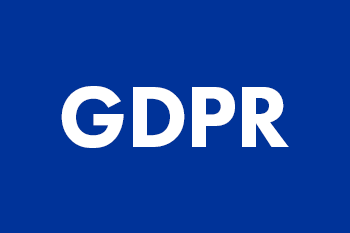Though seemingly minor, mold infestations can have resounding effects on our health and our homes. From respiratory issues to structural damage, the risks and repercussions are extensive, making prompt identification and removal crucial.
This guide dives into mold infestations, their implications, and effective strategies to handle and prevent them. Empowered with this knowledge, you’ll be able to reclaim your home from these fungal invaders, ensuring a safe and healthy living environment for you and your loved ones.
Understanding Mold and Its Natural Habitats
Mold, a fungi form, is ubiquitous in our natural environment. Sometimes, it makes an unwelcome appearance indoors, leading to minor mold infestations. There are several types of mold, each presenting unique concerns and identifying traits. However, their ubiquity and ability to flourish under common conditions make them a near-constant concern.
The Nature of Mold and its Types
Mold is more than just the annoying black and green spots on your bathroom walls. There are thousands of varieties, each with its color and pattern. Some molds, like Penicillium, can be blue or green, while others, like Cladosporium, can be green or black. These mold types thrive under different conditions and vary in their health risks.
Common Places Where Mold Grows
Mold in homes isn’t just limited to damp bathrooms and basements. You can find it on old bread, your washing machine, or even your beloved houseplants. They love dark, damp, and humid places. Thus, mold thrives in kitchens, laundry rooms, and shower cubicles. Even unseen areas, such as the backside of drywall, wallpaper, or paneling, under carpets, or in ductwork, offer a haven for these unsightly invaders.
The Dangers of Ignoring Minor Mold Infestations
Failure to adequately address small infestations can result in substantial health issues and property damage. This underlines the dangers of not dealing with mold infestations when they’re still harmless.
Health Issues Caused by Mold
Many may not be aware, but mold exposure can lead to various health issues caused by mold. While the most common symptoms include sneezing, runny nose, red eyes, and skin rash, mold can also induce severe reactions like shortness of breath and fever. Over time, continuous mold exposure can even lead to asthma. Identifying these mold exposure symptoms and early intervention can prevent severe consequences to health.
Mold and Property Damage
Mold doesn’t just stop at damaging health; it also consumes organic materials like wood and drywall, causing significant harm to your property. Mold damage to buildings can range from minor cosmetic issues to structural integrity threats. For instance, mold on walls and floors not only discolors them but may also cause them to warp and deteriorate.
Under the guidance of professionals like the mold removal specialists in Covington, you can extract mold from your home and reclaim your safe space. Specialists provide expert knowledge and necessary tools, removing the dangerous task from your hands.
Identifying Mold Infestations
Early detection is a crucial step. Mold infestation risks amplify with time; prompt identification is essential to limit mold-related harm.
Mold Identification Techniques
Identifying mold in your home might sound straightforward, but it can become challenging because mold often grows in obscured and hidden areas. However, understanding certain indications can significantly help with mold identification.
- Musty Odors: One unmistakable characteristic of mold is its noticeable musty or damp smell. If a certain area in your home constantly has a musty odor, it could indicate a hidden mold colony.
- Surface Discoloration: Mold often manifests as discoloration on surfaces. It might present irregular patches of black, green, or brown colors. If you notice sudden or unexplained discoloration on your walls, ceilings, or floors, it may be due to mold growth.
- Condensation on Walls: Consistent condensation, particularly on your walls, is a prime sign of high humidity, which is favorable for mold growth. If condensation regularly occurs in certain parts of your home, it might indicate a potential mold issue.
- Allergic Reactions: Regular allergic reactions such as sneezing, coughing, skin rashes, or itchy eyes, particularly when in a certain part of your home, could be indicative of mold presence.
Any of these signs should be a reason for concern and signal a need for a complete mold inspection. Early identification can enable a more efficient remediation process and prevent mold-related issues.
How to Counter Mold Infestations
Once you’ve identified the problem, the path to a healthier home involves mold remediation and preventive measures.
1. Mold Remediation Strategies
One strategy to counter minor mold infestation is to remove mold safely. This often involves mold cleanup using solutions like vinegar or mold-killing products. However, for extensive infestations, professional mold removal is strongly advised. Not only is the process laborious, but disturbing large mold colonies can also lead to a massive release of spores into your home.
On the other hand, biohazard cleanup services can provide you with safe and efficient mold removal. Armed with the right equipment and technical knowledge, they follow a systematic process for crime scene cleaners, ensuring every spore is eradicated.
2. Preventing Future Mold Growth
After tackling the mold issue, consistent measures can help prevent mold growth. Keeping humidity levels low, improving ventilation, and performing frequent mold testing are beneficial in preventing recurrence. Routine home inspection for mold can also support early detection and treatment.
While dealing with mold may seem arduous, remediation solutions like Covington’s prominent restoration services offer a streamlined mold removal and disaster restoration experience. With their expertise, you can reclaim your home’s safety and maintain its health in the future.
Conclusion
Ignoring minor mold infestations carries significant health and property risks. Therefore, timely recognition, intervention, and regular prevention measures are the keys to managing this invisible threat effectively. Understanding where and why mold grows empowers homeowners to take control, ensuring safe and healthy homes for their families.

